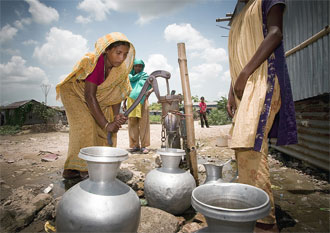Addis Ababa, December 2 (WIC) – The United States Agency for International Development (USAID) has today donated 22 million USD to support the WFP’s Urban HIV/AIDS program over the next three years.
The contribution would help provide essential food and nutritional support targeting high-priority groups in urban and peri-urban areas who are severely or moderately malnourished.
Receiving the donation WFP Representative and Country Director, Mohammed Diab said the contribution will allow WFP to continue the important work of providing nutritional support to individuals living with, and affected by HIV/AIDS. It would help WFP expand coverage and meet the needs of those who are affected, he added.
USAID Ethiopia Mission Director Glenn Andres said this historic event would further strengthen the collaboration between the United Nations World Food Program and USAID and most importantly, will improve the lives of many people in need of help.
In Ethiopia, USAID and WFP have been partners since 2003 to support the Urban HIV/AIDS Project, reaching and improving the nutritional status and quality of life of food insecure people living with HIV.
Support for the contribution is from the US President’s Emergency Plan for AIDS Relief (PEPFAR), it was learnt.





